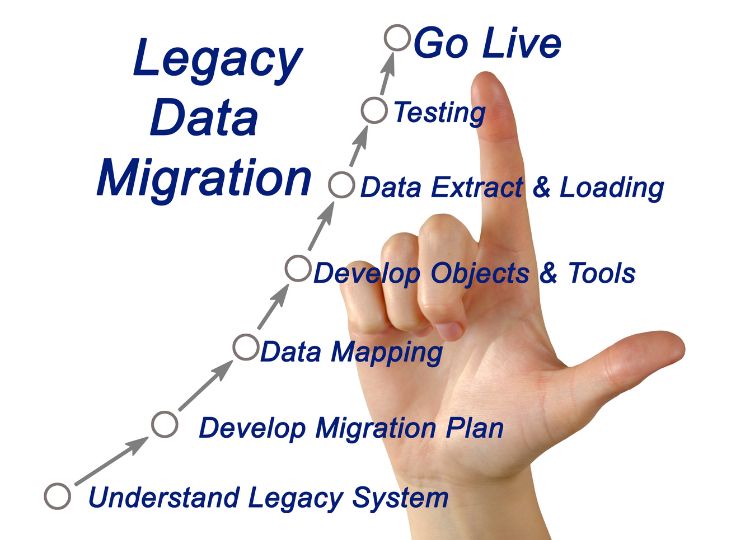TECHNOLOGY
8 Best Practices for Legacy Data Migration

Many big names in the business industry have been relying on legacy data migration for years.
Legacy systems are reliable but lack flexibility and the ability to scale with a business’s changing needs. It might not seem a big deal, but it can hamper businesses’ growth potential. Companies are turning to legacy data migration to prevent this from happening.
Legacy data migration is the process of transferring data from older systems to newer ones, allowing businesses to take advantage of new technologies and tools. It is an excellent way for companies to keep up with rapid technological changes while preserving existing data. It also helps them maintain their competitive edge in the market. Legacy system migration also helps businesses save time and money on creating new systems from scratch. In this blog post, I’m going to share some best practices for legacy data migration to help businesses make the switch. So, let’s dive into it.

1. Analyze Your Business Goals
Before you start the migration process, make sure to evaluate your business goals. Analyzing business goals is necessary whether you are on your way to learning how to build a VPN or are planning to migrate data. Consider how migrating your data will help you meet those goals and if it’s worth the effort. Think about which parts of your data to migrate and what features or capabilities will help you get the most out of it.
You also need to determine which data characteristics you need to preserve in the migration process. It helps you choose the right migration strategy and ensure that your data is migrated correctly. You don’t want to spend time and resources on something that doesn’t align with your business objectives.
2. Create Legacy Migration Plan
Planning is necessary for any successful data migration. Migration is done to make the process as efficient and cost-effective as possible. Start by making a migration plan that outlines the scope, objectives, timeline, resources needed and risk assessment. A good plan should also include a backup process if something goes wrong.
With an effective plan, you can identify potential risks and create strategies to prevent any issues that may arise during the process. Start by creating a detailed migration process timeline and assigning tasks to team members. It will help you stay on track, so the entire process runs smoothly. Make sure to allocate resources, such as time and budget, for the migration process. You can’t start without knowing how much it will cost and how long it will take.
3. Understand The Legacy System
Understanding the legacy system is essential for the migration process. You need to know how it works and what data it stores before you start moving it. Understanding the system’s data structure and how it is organized is essential. It helps determine which data needs to be migrated, which data can be modified or discarded, and which data needs to be preserved.
You need to comprehend all the information stored in the legacy system, such as applications, databases and files. It will help you efficiently migrate the data without sacrificing any essential data.
4. Determine The Components to be Migrated
Once you understand the legacy system, it’s time to identify the components that need to be migrated. It includes data, applications, processes and infrastructure. You need to decide which components need to be migrated and consider any potential challenges that may arise. It will help you determine the best approach for the migration process.
5. Prepare the Target Environment
The target environment is where your data will be migrated to, so it’s crucial that it is set up properly. Before starting the migration process, ensure that the target environment is ready to receive the legacy data. It includes double-checking the compatibility of your applications and databases.
If your targeted environment is on the cloud, determine which type of cloud platform is best for your business. Choosing the right platform to accommodate your data and applications is also necessary.
6. Conduct an Audit of the Legacy System
Conducting an audit of the legacy system is vital to ensure all data is transferred correctly. An audit allows you to detect any problems or issues with the data, such as duplicates or missing fields. It also helps you identify potential risks that may arise during the migration process.
Conducting a complete audit of the legacy system also helps you identify the components of the system that don’t need to be migrated. It can help you save time and resources by reducing the amount of data that needs to be transferred.
7. Conduct Mapping Analysis
Mapping is a crucial part of the migration process. It helps you organize the data and ensure it is accurately migrated to the target environment. Data mapping is a process that identifies the source and target locations of data, as well as any transformations needed.
Mapping also helps you identify any discrepancies between the source and target environments. It will help you detect errors before they occur and ensure all data is transferred to the correct location.
8. Test and Validate the Migration
Testing and validating the migration process is essential to ensure that all data has been transferred correctly. Before completing the migration process, test the system and thoroughly analyze potential issues. It provides peace of mind that all data has been migrated successfully.

















You must be logged in to post a comment Login